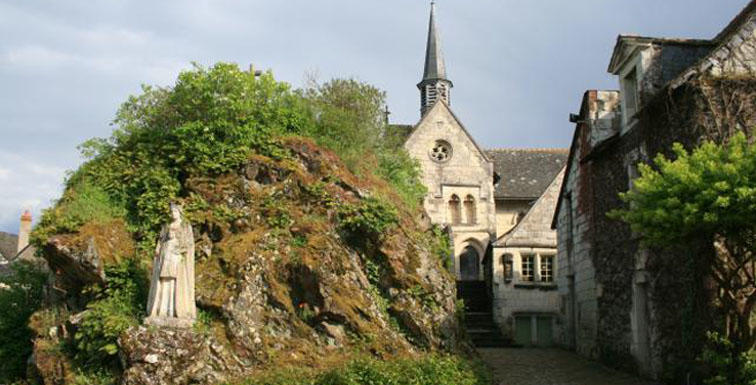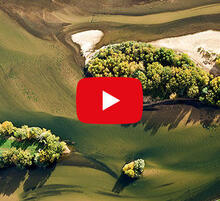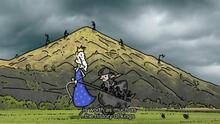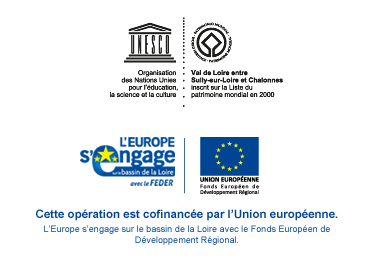- Home
- Know
- A la carte
- Béhuard, living with floods
Béhuard, living with floods
Published on 13 April 2017 - Updated 08 October 2019
Customs, traditions and adaptation to the flooding risk

In this historic village, which is both an island and a village, the inhabitants have a very strong relationship with their land and its particular way of life.
It was here, on this 3km-long pointed strip of land in the middle of the river, that Louis XI, then the nephew of the King René of Anjou, ordered the construction of a church and dedicated it to the Virgin Mary, to thank her for having helped him escape a shipwreck on the River Loire. The church is built on a rock. The decision to do this was not by chance, because if you look closely you’ll notice that the medieval houses have also been raised. Here, in the middle of the river, they’re at the mercy of floods. No obstacles to the flow of the river have been built at Béhuard. None of the houses are particularly waterproof either, as when the water goes in it has to flow through and out again. Here this happens with regularity: a river depth indicator marking the levels of the 10 major floods of the 20th century can be found in the centre of the village. In 1910, the level nearly reached 7 metres.
The Béhuardais, the people of Béhuard, have learnt to live with the river and know when to leave the island. As soon as the water level rises, practically every year, the inhabitants organise themselves. Many of the houses here have hooks on the ceilings to attach furniture to when the water rises. The layout of the interiors is also adapted to the flood risk, for example electrical sockets are placed at mid-height in the walls and the most beautiful furniture is most often on the first floor rather than on the ground floor. Likewise, plenty of the inhabitants own a boat so they can be independent in the rising waters. These plates or punts which you can see in the fields during the summer, will be very useful during a flood. However, when the water covers the landscape, the points of reference are swallowed up, and the experience of the village elders is very useful when it comes to avoiding obstacles. Even if a B-road links the village to the banks of the River Loire, the Béhuardais are insular, and as such, they have shaped a unique way of life and have genuine solidarity with one another.
Listen
See also:
Vous n’avez pas trouvé l’information que vous cherchiez dans cette page ?
Demandez-nous
Bien reçu !
Nous vous répondrons prochainement.
L’équipe de la Mission Val de Loire.

![Nouvelles Renaissance(s] 2023](/var/storage/images/val-de-loire-refonte/dossier-de-parametrage/pied-de-page/nouvelles-renaissance-s-2023/517479-13-fre-FR/Nouvelles-Renaissance-s-2023_image_largeur220.png)


 Lettre d'information
Lettre d'information
 Facebook
Facebook
 Flickr
Flickr
 Podcloud
Podcloud
 Dailymotion
Dailymotion
 Box
Box
 Slideshare
Slideshare
 Diigo
Diigo

